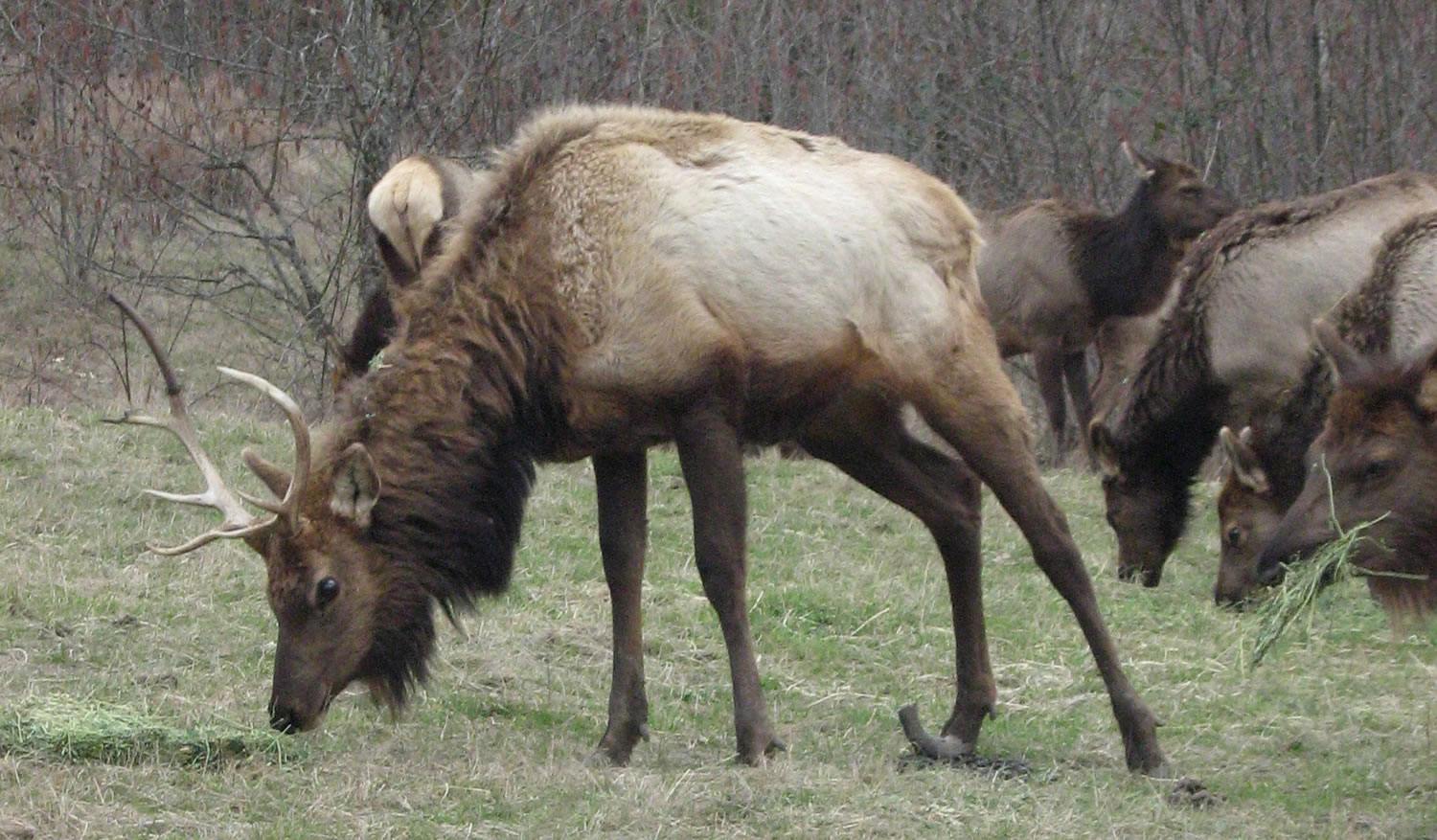Hoof disease in Southwest Washington elk most likely is here to stay.
At least that’s what Nate Pamplin, assistant director of wildlife for the state Department of Fish and Wildlife, says. And that’s the current opinion of the technical team assisting the agency.
“Hoof disease in Southwest Washington is a new fact for us to deal with,” Pamplin told the initial meeting of the Hoof Disease Public Working Group in Vancouver last week.
“We’re not going to eliminate the disease,” he said. “We’re not going necessarily to prevent the disease. It’s here. We may be able to do something — and this is a big caveat around may — about its transmission to other areas.”
Sandra Jonker, regional wildlife program manager for the Department of Fish and Wildlife, said a technical advisory team met with the agency the previous week and delivered the same message.
“It (the disease) would be really, really hard to eliminate,” Jonker told the Working Group.
Sporadic reports of lame elk or elk with overgrown or missing hooves in the Cowlitz River basin began in the mid-1990s. The epicenter was the Boistfort-Wildwood Valley.
Since 2008, reports of elk with hoof disease have increased and spread west to Pacific County, north to Lewis County and south to Clark County. Due to the rapid increase in sightings since 2008, scientists believe a new disease may have entered the elk population.
Much is not known, including how the disease is transmitted and if there are any treatments. Teatments possible on domestic livestock will not work on elk in the wild.
Elk as young as 3 to 4 months have been harvested with acute hoof lesions.
Among the responses being discussed to cope with the hoof disease is culling the obviously affected elk when possible. Also, some believe elk densities are too high and that malnourished animals are more susceptible to hoof disease.
Pamplin asked the question about “social acceptance” of culling elk.
Such culling might have to go on for decades, he said.
“It’s not a, ‘Let’s get out there this weekend and kill some elk that are showing these symp-toms,’ ” Pamplin said. “It’s a prolonged, sustained effort…I’m not looking for a solution for April 2014, then scratching hoof disease off my to-do list. Collectively, it’s going to be on our to-do list.”
Pamplin said there may be different levels of tolerance for elk hoof diseases in different areas.
He mentioned aggressive culling animals showing symptoms in a place like Mason County, to limit spread of the disease, but more tolerance in Lewis County, where the ailment is well established.
Asked if elk hoof disease is problem across the Columbia River, veteran wildlife biologist Pat Miller of Longview answered: “Not yet.”
Axel Swanson of Castle Rock, an elk hunter and senior policy lead for the Clark County commissioners, said the talk of elk culling seemed premature.
“This is the first meeting,” Swanson said. “It took 18 years for this to develop. It may take 50 years to eradicate.”
Mark Smith, operator of Eco-Park Resort in the Toutle River valley, said elk can live with hoof disease, but it is heart-wrenching to watch them die of it.
Smith said there are 187,000 hunters days on the Southwest Washington elk population from September to February and the animals need 14- to 20-day rest gaps between the major (archery, muzzleloader and rifle) seasons.
Dr. Tom Besser of Washington State University said the urgency depends on the cause of the disease.
“We’ve heard some data that might suggest it could be an infectious agent, which would trigger a whole different style of management than if it turned out to be non-infectious,” Besser said. “To my mind, it has not been yet established that it is infectious.”
Publicity about the disease also might be playing a role.
“I think it’s logical to think that as you look harder for something you will see it across a bigger range,” Besser said. “It’s not necessarily meaning it’s still expanding and that’s an important question.”
A response such as culling elk also needs forethought, he added.
“Any intervention that’s being considered, that’s another thing we should think about ahead of time,” Besser said. “Is this going to muddy the water for really understanding what’s going on?”
Allen Thomas covers hunting, fishing and other outdoor topics for The Columbian. He can be reached at 360-735-4555 or by email at al.thomas@columbian.com.




